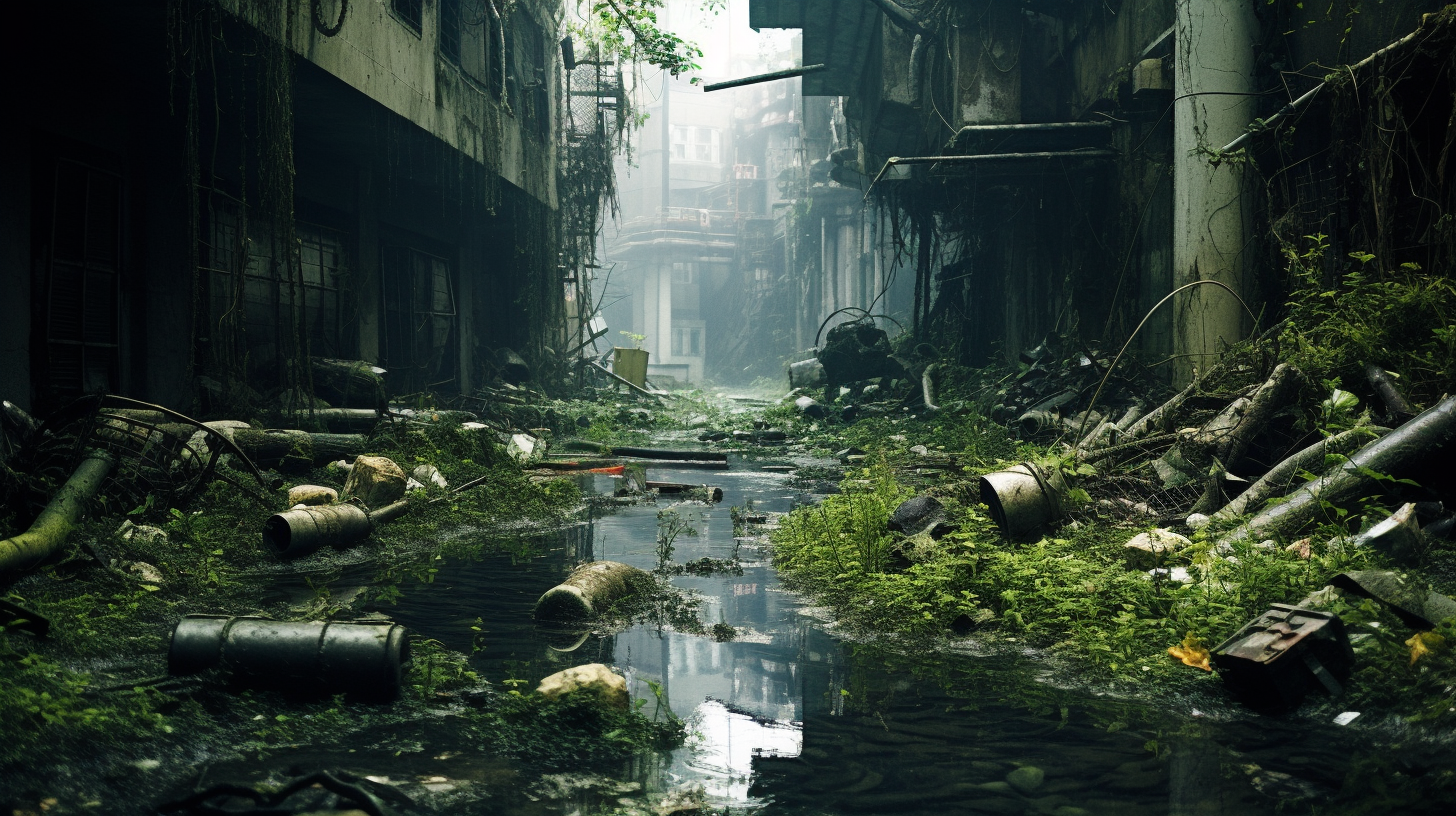In a world marred by environmental calamities, with skies draping cities in their perpetual gray shrouds, there lies a paradoxical oasis amidst the chaos – urban wildernesses. These are not the lush idylls of yesteryear but spectral habitats that have clawed back their existence in the concrete wastelands. Are these unexpected enclaves of life forming the final sanctuaries for nature’s beleaguered children, or are they mere echoes of a world that once was?
The city’s still heart beats in rhythm to the wings of the peregrine falcons, who have sought refuge atop the skeletal remains of skyscrapers. Through their avian eyes, one can gaze upon the kingdom of the roving raccoons and the furtive opossums that claim the streets below. These creatures have adapted, evolved, and thrived in pockets where humanity’s grip has slackened. But at what cost does this prosperity come?
Urban wildernesses are rife with stories of innovation and adaptation. Biologists whisper of coyotes that have learned the language of traffic lights, their survival strategies entwined with the pulsing veins of city infrastructure. We’ve seen plants that breach the surface of concrete, shattering man-made barriers with the sheer force of life – a force driven by an indomitable will to persist. These are the spectral habitats: places where life exerts itself against all odds, adapting to an environment we’ve rendered alien.
And yet, there is a beauty in this resilience, a haunting reminder of nature’s ability to endure. The question remains, however – do these adaptations represent a new norm for ecological sanctuaries or merely temporary havens in our own urban dystopia? Biologists and conservationists grapple with this question, pondering the sustainability of freakish flora and mutated fauna within patches of green that struggle to breathe amidst the smog.
But this is a silent war. It’s fought in the shadows of abandoned lots, in the murk of polluted ponds, and amongst the ramshackle refuge of our discarded world. The new ‘sanctuaries’ are not guarded by fences or park rangers, but by the very adaptation and resilience of the species that inhabit them. These are the new battlegrounds for survival, arenas where life’s tenacity is both the protagonist and the prize.
As we scavenge through the remnants of what was once a balanced ecosystem, we find ourselves spectators to a new chapter in the tale of urban evolution. Grass roots undermine the foundations of empty factories, while flowers bloom defiantly in the cracked open roofs of abandoned houses. In these spectral habitats, existence itself is an act of rebellion against the dystopian landscape mankind has sculpted. And yet, we learn from these urban sanctuaries – for in them resides a library of undocumented wisdom on surviving the Anthropocene’s harshest lessons.
But let us not confuse this adaptation for improvement, nor mistake these sanctuaries for hope. They are simply the reality – the byproduct of environmental collapse. Ethically, the dialogue is nuanced. Should we intervene, restore, or let the course of evolution play out on this unorthodox stage? These are pressing matters, requiring deliberation and wisdom that seem in short supply amidst the cacophony of prevailing crises.
In conclusion, our cities’ wild spaces have become refuges of necessity, sanctuaries by default rather than by design. They remind us, with every whisper of leaves in the desolate avenues and each shadowed flit of wings at dusk, that life persists, adapts, and endures – even in the face of our greatest follies. As curators of this planet, our role is uncertain, and our time to decide on it is rapidly dwindling.
